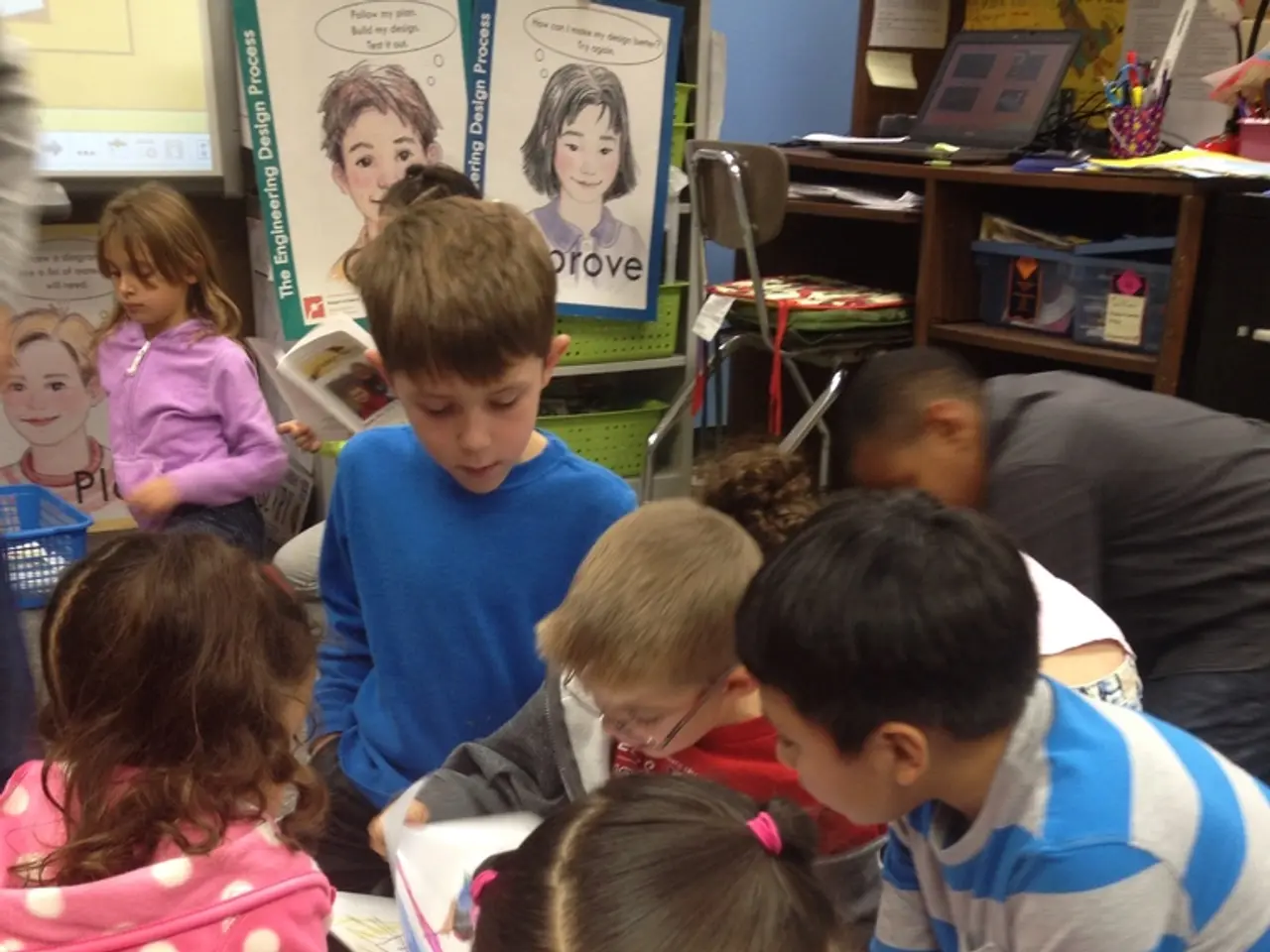Investigating Educational Approaches via Mistakes at Children's Museum
Children's museums are unique learning spaces that trust in a child's ability to learn through experience and play. They are designed to offer manageable challenges, where children can stretch their minds without being overwhelmed. These challenges, often resulting in small failures and recoveries, are celebrated as key ingredients in learning.
Mistakes are not viewed as setbacks but as opportunities for growth. Failure activates not only metacognitive skills but also emotional resilience. Research by Carol Dweck has shown that praising effort over outcome encourages children to view failure not as a fixed deficit, but as a natural part of learning.
In these museums, failure is safe, shared, and surrounded by curiosity, not shame. This environment is one of the most powerful drivers of cognitive development, according to the theory of constructivism. The Domino Drop exhibit, for example, encourages children to regroup, problem-solve, and try again.
The Ball Ramps help children develop an intuitive grasp of force and motion through repeated failures. Similarly, the Kinetic Jams exhibit teaches children about systems and what happens when they don't work. The Wind Tunnel, on the other hand, helps children learn physics principles firsthand through feedback from failure.
Productive failure, an instructional approach that encourages exploration and experimentation, is at the heart of these museums. It strengthens cognitive flexibility, the ability to think in new ways, shift strategies, and find alternative solutions. When children face challenges without quick solutions, they actively engage their brains, fostering deeper learning and critical thinking.
This approach also contributes to resilience by helping children develop persistence and the ability to cope with setbacks. By navigating failure productively, children learn that errors are part of the learning process, which builds emotional regulation and motivation to persist.
In contrast, passive learning or relying on instant solutions can diminish cognitive engagement and resilience. Therefore, productive failure environments better support cognitive growth by fostering problem finding and problem solving, expanding children's knowledge base while developing persistence and emotional strength.
The Cause & Effect exhibit, for instance, teaches children troubleshooting, revising, and adapting skills. In early childhood, learning through failure helps children develop executive functions such as working memory, inhibitory control, and cognitive flexibility.
Children's museums are multisensory and hands-on, supporting learning across developmental stages and styles. In a children's museum setting, adults ask guiding questions that turn frustration into reflection and shift focus from winning to wondering.
At Museo dei Bambini, children are encouraged to explore, experiment, and fail. Exhibits are designed with built-in opportunities for trial, error, and revision. Stanford professor Manu Kapur has demonstrated the value of productive failure, a concept that encourages learners to attempt solving problems before receiving instruction.
These museums are low-stakes, high-choice environments with no grades, scripts, or pressure to perform. They provide a perfect setting for children to learn, grow, and develop the resilience they need for a lifetime of learning.
The lessons of the museum don't have to end at the exit; parents and caregivers can continue to support failure at home. By valuing the process over the product, asking reflective questions, sharing their own mistakes, and creating time and space for open-ended play without specific goals, adults can help children develop the skills they need to thrive in a rapidly changing world.
- The Museum of Children in Puglia, much like other children's museums, emphasizes learning through mistakes and failure, viewing them as crucial elements for growth and personal development.
- The Domino Drop exhibit at Museo dei Bambini, along with the Ball Ramps, Wind Tunnel, and Kinetic Jams, work to promote productive failure, enabling children to learn physics principles, develop cognitive flexibility, and foster resilience.
- Recognizing the importance of productive failure, parents and caregivers can continue to support their children's learning at home, by valuing the process over the product, asking reflective questions, sharing their own mistakes, and creating time and space for open-ended play without specific goals.




